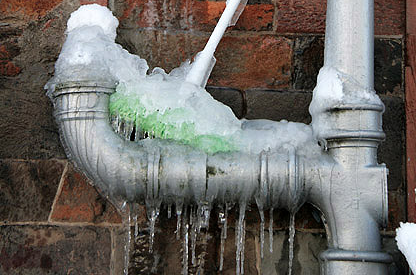How to Protect Pipes from Freezing: Expert Guidance
How to Protect Pipes from Freezing: Expert Guidance
Blog Article
How do you really feel in relation to Helpful Tips to Prevent Frozen Pipes this Winter?

Cold weather can ruin your pipes, specifically by freezing pipelines. Right here's just how to stop it from occurring and what to do if it does.
Intro
As temperatures decline, the risk of icy pipelines boosts, possibly resulting in expensive fixings and water damage. Comprehending just how to stop frozen pipes is vital for home owners in cool climates.
Understanding Frozen Pipes
What causes pipes to freeze?
Pipelines ice up when revealed to temperature levels listed below 32 ° F (0 ° C) for expanded durations. As water inside the pipes freezes, it expands, putting pressure on the pipeline wall surfaces and potentially causing them to rupture.
Dangers and damages
Icy pipes can result in water supply disturbances, residential property damage, and pricey repair services. Burst pipelines can flood homes and create comprehensive architectural damage.
Indicators of Frozen Water Lines
Identifying frozen pipelines early can prevent them from bursting.
Just how to identify frozen pipelines
Try to find decreased water flow from taps, unusual smells or sounds from pipes, and visible frost on revealed pipelines.
Prevention Tips
Protecting prone pipelines
Wrap pipes in insulation sleeves or use warm tape to safeguard them from freezing temperature levels. Concentrate on pipelines in unheated or exterior locations of the home.
Home heating strategies
Maintain interior areas appropriately heated up, specifically locations with pipes. Open cupboard doors to permit warm air to distribute around pipes under sinks.
Shielding Outside Pipes
Yard hoses and outdoor taps
Detach and drain yard hoses prior to winter season. Install frost-proof faucets or cover outdoor faucets with shielded caps.
What to Do If Your Pipes Freeze
Immediate activities to take
If you suspect frozen pipelines, maintain faucets open up to ease stress as the ice thaws. Use a hairdryer or towels soaked in warm water to thaw pipelines gradually.
Long-Term Solutions
Structural modifications
Take into consideration rerouting pipes away from exterior wall surfaces or unheated locations. Include added insulation to attic rooms, cellars, and crawl spaces.
Updating insulation
Buy high-quality insulation for pipes, attics, and wall surfaces. Correct insulation helps maintain consistent temperature levels and lowers the threat of icy pipes.
Conclusion
Preventing icy pipes requires aggressive procedures and quick responses. By recognizing the causes, indicators, and safety nets, property owners can shield their plumbing throughout winter.
5 Ways to Prevent Frozen Pipes
Drain Outdoor Faucets and Disconnect Hoses
First, close the shut-off valve that controls the flow of water in the pipe to your outdoor faucet. Then, head outside to disconnect and drain your hose and open the outdoor faucet to allow the water to completely drain out of the line. Turn off the faucet when done. Finally, head back to the shut-off valve and drain the remaining water inside the pipe into a bucket or container. Additionally, if you have a home irrigation system, you should consider hiring an expert to clear the system of water each year.
Insulate Pipes
One of the best and most cost-effective methods for preventing frozen water pipes is to wrap your pipes with insulation. This is especially important for areas in your home that aren’t exposed to heat, such as an attic. We suggest using foam sleeves, which can typically be found at your local hardware store.
Keep Heat Running at 65
Your pipes are located inside your walls, and the temperature there is much colder than the rest of the house. To prevent your pipes from freezing, The Insurance Information Institute suggests that you keep your home heated to at least 65 degrees, even when traveling. You may want to invest in smart devices that can keep an eye on the temperature in your home while you’re away.
Leave Water Dripping
Moving water — even a small trickle — can prevent ice from forming inside your pipes. When freezing temps are imminent, start a drip of water from all faucets that serve exposed pipes. Leaving a few faucets running will also help relieve pressure inside the pipes and help prevent a rupture if the water inside freezes.
Open Cupboard Doors
Warm your kitchen and bathroom pipes by opening cupboards and vanities. You should also leave your interior doors ajar to help warm air circulate evenly throughout your home.

We had been made aware of that write-up on Winter Plumbing Precautions: Preventing Frozen Pipes from someone on a different blog. Do you know somebody who is in to the niche? Take a moment to share it. We thank you for reading our article about 6 Ways to Prevent Frozen Pipes.
Schedule Now! Report this page